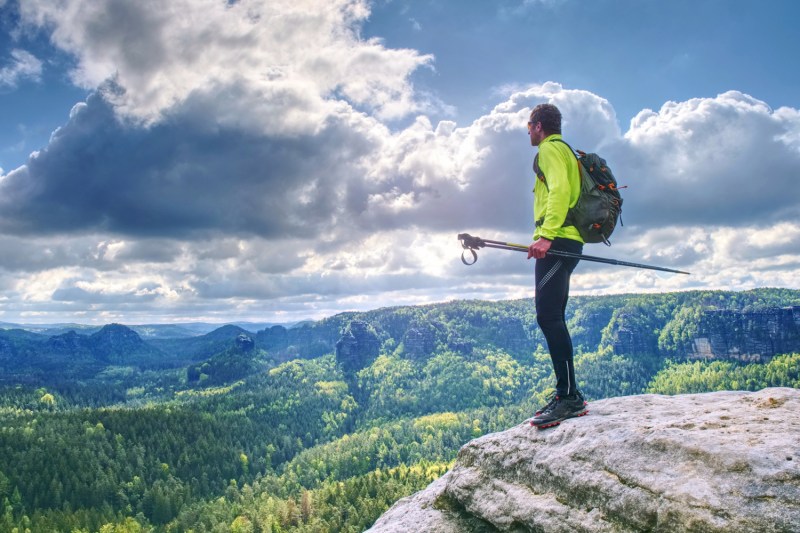With summer approaching, it’s time to air your camping gear out of winter storage! If you’ve got some bucket-list adventures coming up, you really can’t start planning too soon. Some of your current items might be broken, outdated, or just not useful anymore for the types of adventures you want to go on. So, to help make the transition easier, we’ve compiled a list of summer camping essentials, from a tent to sunscreen, to the more luxury nice-haves.
The fundamentals for summer camping

No camping list is complete without the fundamentals, so let’s cover these first. The National Park Service actually lists 10 essential categories of items that will keep you and your crew safe. Some of these items might vary depending on the activity, but here’s the gist:
- A reliable camping tent (with at least 10 stakes)
- Tent footprint or tarp (if your tent didn’t come with one)
- Tent rain fly and/or sunshade (if your tent didn’t come with one)
- Sleeping bag
- Foam or inflatable sleeping pad (I like the ones from Klymit)
- Folding furniture (based on your specific needs and headcount)
- Light sources with batteries (think flashlights and/or headlamps)
- Sunscreen (at least SPF 30)
- Lip balm (at least SPF 15 with a moisturizer)
- Any required camping/backcountry permits or parking passes
- Paper map of the area where you’re staying and exploring
- Guidebook of the area
- Camera
- High-quality sunglasses
- First-aid kit
- Whistle
- Emergency blanket
- Duct tape for repairs
- General repair kit for sleeping bags, pads, and tents
- Your favorite multi-tool
- Some cash and a credit card
- Matches/lighter
Outdoor clothing

- Moisture-wicking shirts and underwear
- Quick-drying bottoms (hiking-ready pants and shorts)
- Wide-brimmed hat for sun protection
- Boots or shoes suited for the terrain
- Water shoes
- Inexpensive pair of flip-flops
- Packable waterproof jacket (even if the forecast is 90 and sunny)
- Socks (synthetic, quick-drying, and/or wool)
- Quick-drying, packable towels
- Waterproof gloves (based on the weather/adventure)
Camp kitchen supplies

The right food and beverages can turn a good
- Lightweight camp stove
- Appropriate fuel for stove
- Waterproof matches
- Windscreen
- Firewood (check with local regulations first)
- Cast-iron pan or pot
- Thermoses for beverages, soups, or cold or hot meals.
- Portable coffee and tea maker
- Hard-sided camp cooler
- Ice
- Reusable water bottles
- Water jugs (limit smaller bottles to limit campsite footprint)
- Water filter like LifeStraw
- Trash bags
- Resealable plastic bags
- Lightweight, insulated cups (one per person to limit campsite footprint)
- Plates and utensils (biodegradable or light metal)
- Paring knife and chef’s knife (I like the ones from Cutluxe)
- Cutting board
- Aluminum foil for campfire packets
- Biodegradable soap
- Hand sanitizer
- Skewers
- Can opener
- Roll of paper towels
- Collapsible water container
Camp food (will vary based on specific needs)

What food you choose to pack all comes down to personal preference. You’ll likely want to consider how long you’ll be
- Coffee and tea
- Bread
- Eggs
- Peanut butter
- Energy bars
- Cooking oil/spray
- Meat
- Grilling vegetables
- Fruit
- Salt/pepper
- Spice kit
- Trail mix (your favorite kind)
- Pancake mix
- Drink mixes
- Graham crackers
- Marshmallows
- Chocolate bars
Personal items

These will vary from camper to camper, but there are some essentials that most of us just can’t do without.
- Toilet paper
- Toothbrush
- Toothpaste
- Brush/comb
- Eye mask
- Earplugs (especially if you’re a light sleeper)
- Insect repellant
- Deodorant
- Wet wipes for freshening up
Add-ons

- Backup battery or portable power station (with correct USB connectors)
- Camera
- Playing cards
- Board games
- A good book
- Water toys
- Balls for the dog
- Notebook/journal
- Packable poncho
- Trekking poles
- Camp pillow
- Camp chairs
- Hammock (if your campground allows them)
Pro tip: Pack with an app
Unless you’re a packing nerd (this humble author proudly raises his hand), you probably don’t enjoy packing, and you probably enjoy making packing lists even less. But we’re speaking from experience when we say that they can literally make or break a
A little preparation can go a long way because when you’re miles from anywhere, hopping over to the nearest store to grab something you forgot might be impossible. Make one
Bonus tip: Pack these to elevate your s’mores game

No
- Substitute Oreos for the graham crackers
- Add peanut butter to the mix, or substitute peanut butter cups for the chocolate bars
- Since everything is better with bacon, put a piece of bacon in your s’more for an incredibly savory and sweet experience
- Spread some strawberry or raspberry jam onto the graham crackers to blend fruit and chocolate (and if you use peanut butter, you get a PB&J s’more)
Hopefully this ultimate summer




